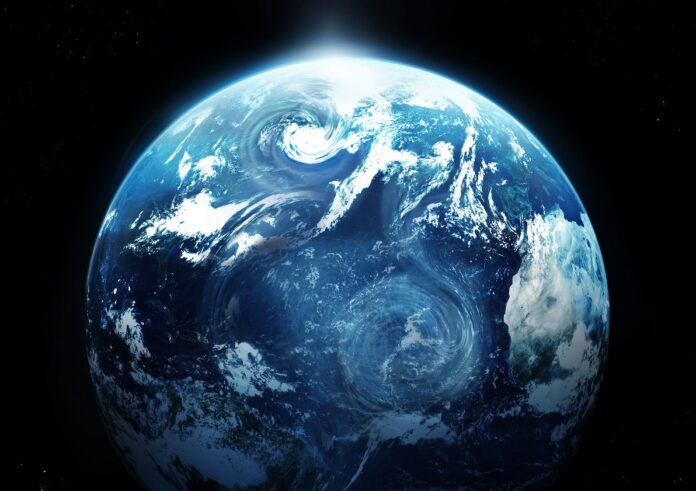Claudia Giardino talks to Erika Yarrow-Soden about the developments in Earth Observation technology that are benefiting water professionals.
Recognising the importance of digitalisation for the water sector, IWA established the Digital Water Programme (DWP). This provides a platform to share experiences, promote leadership in the transition to digital water solutions, and consolidate lessons to help guide utilities during their digital transformation.
To ensure wider engagement on digital water, the DWP is encouraging the formation of regional and topical subgroups, where members can share experiences, identify gaps, and come up with efficient solutions on specific topics.
The Earth Observation (EO) for water management subgroup launched in the summer of 2021 as a Community of Practice (CoP). It brings together experts from different sectors of the water industry interested in the use of EO technologies for improved water quality and quantity management.
It aims to:
- Provide a platform to share approaches on the application of EO technologies for water management for different end-users (for example, urban water, drinking water, water resource management, environmental protection, aquaculture, and emergency response.)
- Enable linkages between cross-cutting scientific communities and end-users to attain a better understanding of how EO technology can be best used, and what the needs are of end-users
- Identify gaps and how these can be addressed in the understanding and use of EO technology in managing water.
Claudia Giardino is a senior researcher at CNR-IREA (National Research Council of Italy, Institute for Electromagnetic Sensing of the Environment) in Milan and a leading expert in EO technology. She explains the benefits that the CoP is delivering: “To be part of a community always has an advantage. It is helpful to be part of a group in which there are experts from different fields participating. This working group focuses on innovation, best practice, and knowledge of how EO can benefit the water sector. We work in close cooperation with stakeholders worldwide.”
EO provides a valuable tool for water practitioners, as Giardino explains: “EO allows you to take synoptic (overview) measurements from space providing data that can inform water management and enable experts to forecast whether water targets will be met.
“EO allows us to make comparisons from different countries, without us having to deal with geographical boundaries, as we can get the data we need remotely”
“Updates are systematic, and we have now been collecting data over a number of years. As the data is captured frequently, we can track patterns and changes.
“One of the advantages of digital data is that it can be utilised using various IT tools. There are several key physical quantities that can be derived from EO for water resource management.”
Giardino explains that the many uses of EO for the water sector include the observation of physical aspects such as water levels, wave patterns and the presence or absence of ice, through to parameters such as water colour, organic matter, total suspended matter and those relating to biogeochemistry, and to others such as algal biomass.
She continues: “Another advantage of EO is that it allows us to make comparisons from different countries, without us having to deal with geographical boundaries, as we can get the data we need remotely.
“In terms of the disadvantages of EO, one problem can be cloud cover, which can prevent us observing the Earth’s surface. It can also be difficult to capture information about small lakes and streams. EO usually captures information of bio-physical parameters at the topmost layers of the water column, so the deepest layers cannot be observed. Because EO can retrieve a lot of information, it is particularly important to consider the complexities of the data collected.”
In recent years, knowledge has increased about the wider uses of EO. Giardino explains: “Utilities are now very confident in the use of EO to measure changes such as climate change. There is also more training being given at universities about the use of this technology. We are at a good time in the development of space technology. From scientists to citizens, there is a good understanding of what satellite technology can offer.
“EO is a helpful tool for tackling climate change. We now have data collected over a number of years, which enables us to look at the changes that are happening on the Earth’s surface viewed from space. In water resource management the contribution of EO is amazing, because it provides long-term measurements of water levels, helping us to understand how much water is stored in water basins, and when there is a flood event it can be used to measure the changes in weather patterns. It can be used to track eutrophication, which enables us to understand how much an ecosystem is suffering, maybe because the water quantity is decreasing or because nutrients in the aquatic ecosystem are increasing.
“EO data can be combined with hydrological and ecological modelling. We can provide forecasting of suspended sediments, for example. Experts working in freshwater can use EO to help plan drinking water provision in urban areas and treatments for purifying water for drinking can be better tailored to requirements.”
Giardino concludes: “One of the great opportunities of EO is the ability for water professionals to collaborate with people working in EO and modelling.
“We need people who have a multi-disciplinary background. This could be increased with investments in EO training in universities. It would be great for students to be taught about EO throughout their educational career.
“There is also the opportunity for legislation to be used to improve the sharing of knowledge between public and private companies, using the combination of EO and modelling for the better understanding of water management. There are still gaps of knowledge between different countries and continents that EO could help address. It has the potential to help water professionals reach their common goal of the protection and preservation of water resources.” •
More information
Find out more about the Earth Observation for water management CoP https://iwa-network.org/projects/earth-observation-for-water-management-community-of-practice/








